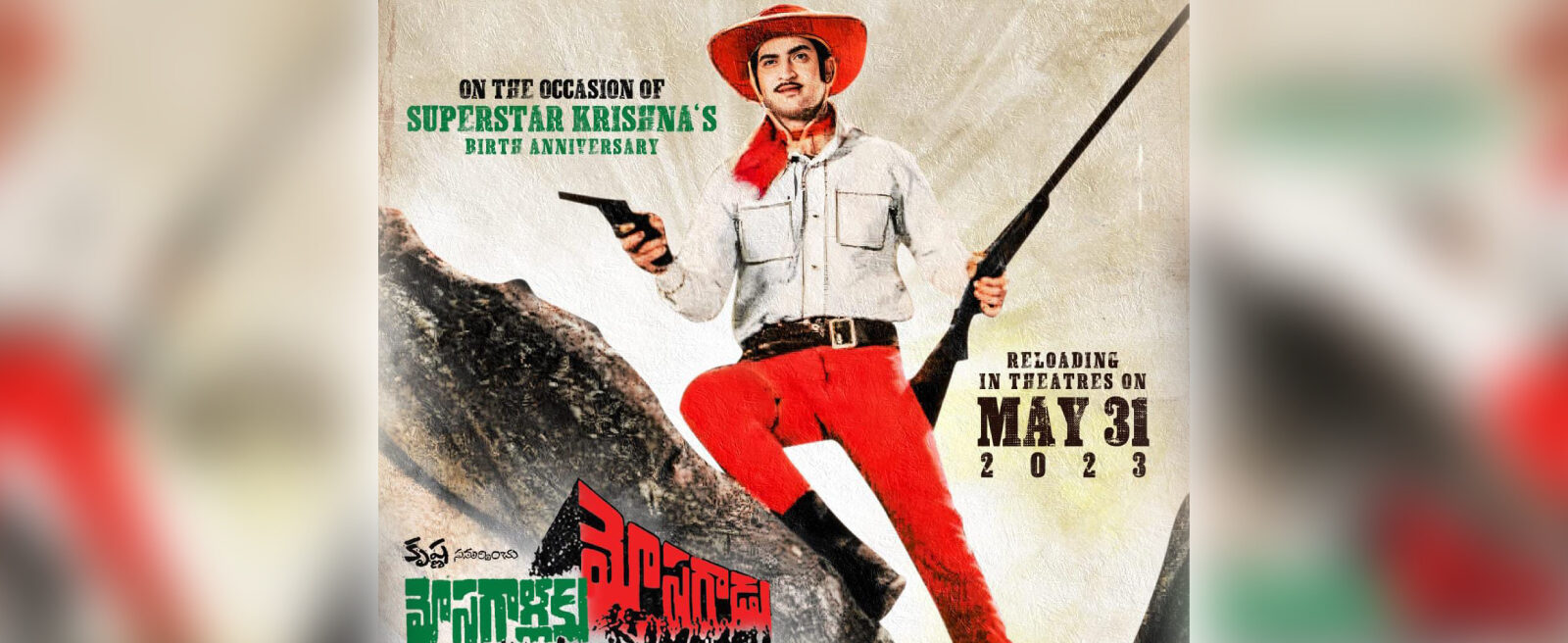With adventure as its main ingredient, Superstar Krishna's 'Mosagallaku Mosagadu' took viewers to an imaginative world of Western cowboys.
Published May 31, 2023 | 6:18 PM ⚊ Updated Aug 10, 2023 | 3:01 PM

Poster of actor Krishna's 'Mosagallaku Mosagadu'. (Twitter)
There’s a reason why Mosagallaku Mosagadu earned Telugu actor late “Superstar” Krishna special merit. At a time when the Telugu film industry was churning out family-oriented, sentiment-laced melodramatic stories in the latter half of the 60s, this film was a breath of fresh air.
As claimed by the maker of the film, Aadi Sheshagiri Rao Ghattamaneni, it cost ₹20 lakh to digitise Mosagallaku Mosagadu — to cleanse the film, increase the resolution, colour correct, carry out the changes in the new soundtrack, etc.
As this timeless classic of the cowboy genre is all set for a re-release on Krishna’s birth anniversary, on 31 May, here some history into the film that was tagged by seniors as a bizarre and experimental venture.
A timeless gem… and one of my all-time favourites! Thrilled to bring it back on the big screen once again! This one’s for all the fans! 🤗
Presenting the re-release trailer of #MosagallakuMosagadu! In cinemas from May 31st. https://t.co/qPeLGvOuYd
— Mahesh Babu (@urstrulyMahesh) May 22, 2023

Cowboy-themed Telugu movie ‘Mosagallaku Mosagadu’. (Twitter)
The story is set in the pre-independence era when severe unrest and chaos persisted. With British and French establishments attacking princely territories in India, the fictional kingdom of the Amaraveedu dynasty also faced the brunt of British forces during the Battle of Bobbili in South India.
Two friends — Daanala Dharmayya and Pagadala Subbayya — hide treasure in a cave and set off, one to Gadwal and the other to Kurnool, taking away all the keys to the treasure.
Five bandits, including Krishna Prasad (Krishna) and Radha (Vijaya Nirmala), hunt for this treasure. And who finds the treasure amidst all the twists and turns is the story.
With adventure as its main ingredient, Mosagallaku Mosagadu took viewers to an imaginative world of Western cowboys. The movie brought freshness to an already-bored Telugu audience, who had — by the 70s — seen enough family melodrama.
Adventurous horse rides, deserts, and mountain ranges in northern India and picturesque Shimla caught the fascination of the general public.

Krishna and Vijaya Nirmala in ‘Mosagallaku Mosagadu’. (Supplied)
An already-established actor, Krishna had a record of completing 60 films in just five years in the industry. He wanted to make films of his liking, rather than burdening producers.
Thus, his home banner Padmalaya Studios emerged with Agnipariksha (1970) as its debut flick. But it didn’t give him the desired success.
At the same time, Clint Eastwood’s cowboy-themed films like The Good, the Bad and the Ugly (1966) and For a Few Dollars More (1965) had been attracting reasonable urban crowds to theatres in then-Madras. This was followed by Mackenna’s Gold (1969) starring Gregory Peck. The bounty hunter stories evoked new interest in Krishna to come up with a story, albeit with the backdrop of the Telugu region.
It was writer Aarudra who was offered the chance to direct the film after he rendered the screenplay and gave the title Adhrusta Rekha. However, much later, he turned down the offer to direct it. The film’s name was changed to Mosagallaku Mosagadu, roping in KSR Das as the director.

‘Mosagallaku Mosagadu’ releasing on 31 May. (Twitter)
When Telugu cinema was restricted to the four walls of Madras film studios, “Superstar” Krishna seemed to be a rookie to outsiders when he dabbled with a script that seemed relatively unknown and unfamiliar with Telugu audiences or their tastes.
He booked a special train to Rajasthan and set off with 100-odd artists and technicians on board to shoot the film in the Thar desert.
The shoot, including the film’s songs, were picturised at Bikaner fort in Rajasthan. Padi Shivan temple, Devi Kund Sagar, Naldehra Golf Course in Himachal. Narkanda snowfalls in Tibet, locations at the China-India border and Sutlej river. Interestingly, considering the pace at which the crew worked on the film, it took just 28 days to wrap up the whole schedule.
With no superior camera equipment in those times, the crew had to devise jugaad ways to shoot the film.
Music composer Adinarayana Rao, who is known for his traditional taste in music mostly suited for family dramas, stunned everyone with a cowboy-themed background score that elevated every frame of the film.

‘Mosagallaku Mosagadu’ releasing in Sudarshan theatre. (Supplied)
The legendary NT Rama Rao, among several others, watched the preview before the film’s release on 27 August 1971.
While many walked out of the theatre without the slightest excitement, it was NTR who spoke from his heart and told Krishna that Mosagallaku Mosagadu would make big strides slowly, only during the second and third run.
However, he said that it would not pull female audiences.
Produced with a budget of ₹6 lakh, Mosagallaku Mosagadu earned Krishna and his younger brother Aadi Sheshagiri Rao Ghattamaneni (producer of the film) a whopping ₹36 lakh.
It was after NTR’s advice that Krishna signed on a family entertainer Pandanti Kapuram (1972), soon after the cowboy film.
Mosagallaku Mosagadu is the first colour film for director KSR Das. Later on, films in this genre came along — like Manchi Vallaki Manchivadu (1973) and Cowboy No.1 (1986) — but none could match “Superstar” Krishna’s film in terms of the story or technical finesse.
With its massive success at the box office, Mosagallaku Mosagadu was dubbed in English under the title Treasure Hunt.
It was, in return, shown to Westerners from whom the cowboy-themed story was borrowed. It was also dubbed in Hindi under the title Gunfighter Johnny and in Tamil as Mosakkaaranukku Mosakkaaran.
